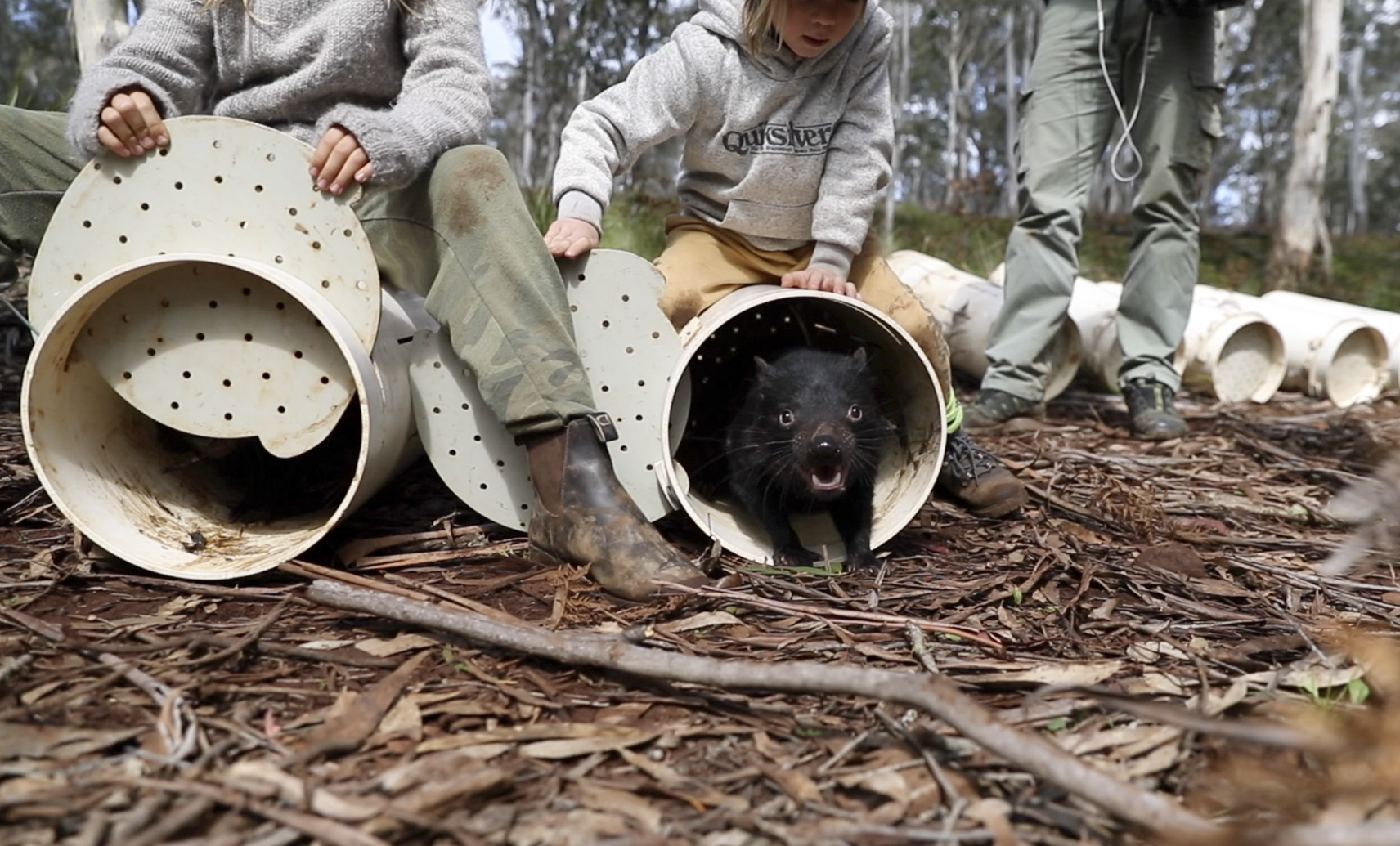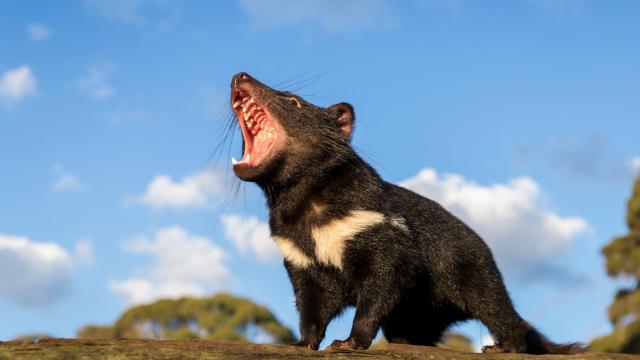On Monday, wildlife managers announced that they had brought Tasmanian devils back into the (relative) wilds of the Australian mainland, the first time these creatures will be living there in 3,000 years. It’s an attempt at a two-for-one bank shot to save the ferocious marsupials as well as creatures under assault from feral cats.
The cause of Tasmanian devil’s disappearance from continental Australia is murky, with some evidence tying it overhunting by Indigenous Australians. Other signs point to the introduction of the dingo. Whatever the case, Monday’s news is part of an effort to bring the Tasmanian devil back to its former range. Aussie Ark, the group leading the reintroduction, has released 26 devils into a sanctuary in New South Wales near Barrington Tops National Park.
The sanctuary is enclosed and covers nearly 1,000 acres, giving the devils space to roam without impacting native wildlife outside the area. Each marsupial has been outfitted with a radio collar, and camera traps dot the sanctuary. That will allow scientists to study them in a somewhat controlled setting to see how they fare and interact with other wildlife.
Australia’s native species have had a rough go of it in recent years; the continent is facing some of the highest extinction rates anywhere on the planet. Climate change has cranked up the heat and led to catastrophic bushfires that resulted in the death of an estimated 3 billion animals. Logging has also reduced habitat. Tasmanian devils are fierce, but they’re unlikely to stop those two threats, though their presence could help lead to more forest protections.

Where their reintroduction could help, however, is doing battle with the feral cats that have turned the Outback into a buffet. Cats showed up with European settlers and quickly took to murdering everything they could get their claws on. A 2018 paper found cats in the Outback killed 1.8 million reptiles every single day. They also slaughter 316 million birds and 800 million mammals per year. Cats coupled with foxes, another introduced species, have pushed native wildlife to the brink.
Researchers have been trying novel solutions, like training native creatures to fear feral cats. But the devil could help do battle with these invasive species, and previous research has suggested reintroduction as a potential way to rebalance ecosystems. Tim Faulkner, the president of Aussie Ark, said in an email that the Tasmanian devils were “regulators” of Australia’s native ecosystems.
“The devil fills the ecological niche of scavenger and predator,” he said (while I continued to hum “Regulators” in my head). “It coexists with Australian fauna, especially small mammal/marsupials. Since European settlement in Australia, we’ve lost nearly 40 small mammal [species]. This is as many as the rest of the world combined and the highest rate of extinction on earth. These are mostly because of the feral fox and cat. By rewilding the devil, it can compete against the fox and can in turn help in the protection of other native animals.”

The rewilding project could also help the devils themselves. In Tasmania, they’ve been decimated by devil facial tumour disease, a transmissible cancer. The population brought to the mainland are disease-free and suitable to mate without the risk of in-breeding. That essentially makes them a backup population, should devils continue to decline back in Tasmania.
The tumour disease has also given researchers a sense of what to expect with cat populations on the mainland. Faulkner said that where devil populations have declined 80% to 90%, “cat numbers have significantly increased. It’s easy to appreciate that healthy Tasmanian devil populations have helped in keeping cat numbers in check.”
The rewilding movement has picked up steam in recent years around the world. One of the most prominent examples is wolf reintroduction to Yellowstone 25 years ago. The project is widely viewed as a success. Elk populations have shrunk to levels considered healthy, and that’s set off a number of beneficial impacts throughout the ecosystem, known as a trophic cascade. Researchers have also brought bison back to Illinois in an attempt to recreate the tallgrass prairies that blanketed the U.S. before settlers wiped out the herds and planted monocrops of corn, wheat, and soybeans across the Midwest.
There was a much smaller gap between extirpation and reintroduction for those projects. But Faulkner said that 3,000 years is “realistically the ecological ‘blink of an eye,’” and the Tasmanian devil project could yield benefits and insights into how Australia’s once-intact ecosystems functioned. The group said it also plans to bring Indigenous groups into the process down the road, though the role they’ll play is unclear.
“Once these first rewilding are successful, we’ll engage with Indigenous groups along with many others to collaborate and achieve bigger and better outcomes,” Faulkner said.
